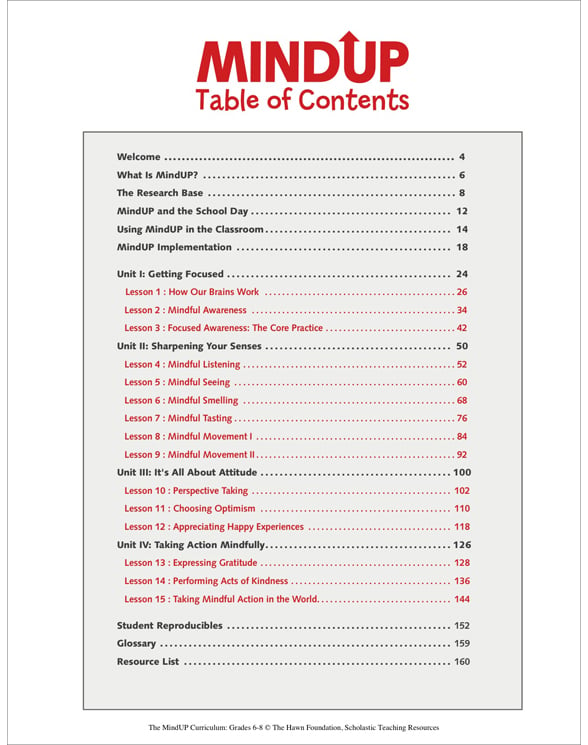


They ll apply mindful listening to observing the way people speak to one another in particular, identifying the tone of someone s voice and monitoring their own. What Can You Ex pect to Observe? Students really make an effort tune in to details of the sounds they hear and point out the nuances of sounds that make them distinct. This work helps prepare students for following directions, resolving conflicts through discussion, building friendships, and listening critically to news, ads, and other media messages.
MINDUP CURRICULUM SCHOLASTIC HOW TO
Being able to listen in a focused way to what others say and to home in on details such as tone and inflection gives a listener a clearer notion about the meaning of the words and a better idea for how to respond. Mindful listening also lays the groundwork for social awareness and effective communi cation an important part of the Common Core Standards. As students monitor their own auditory experience noting what they choose to focus on and/or respond to they build sel f-awareness and self- management skills. In fact, training our brains to concentrate on specific sounds helps heighten our sensory awareness. Why Practice Mindful Listening? Research suggests that students become more focused and responsive to their environment by participating in mindful listening activities, such as Audio Alert in this lesson. Mindful listening helps us choose which sounds to focus our attention on and helps us to be thoughtful in the way we hear and respond to the words of others. 2 Mindful Listening What Is Mindful Listening? From the buzz of a cell phone to the wail of a siren, sounds are all around us.


 0 kommentar(er)
0 kommentar(er)
